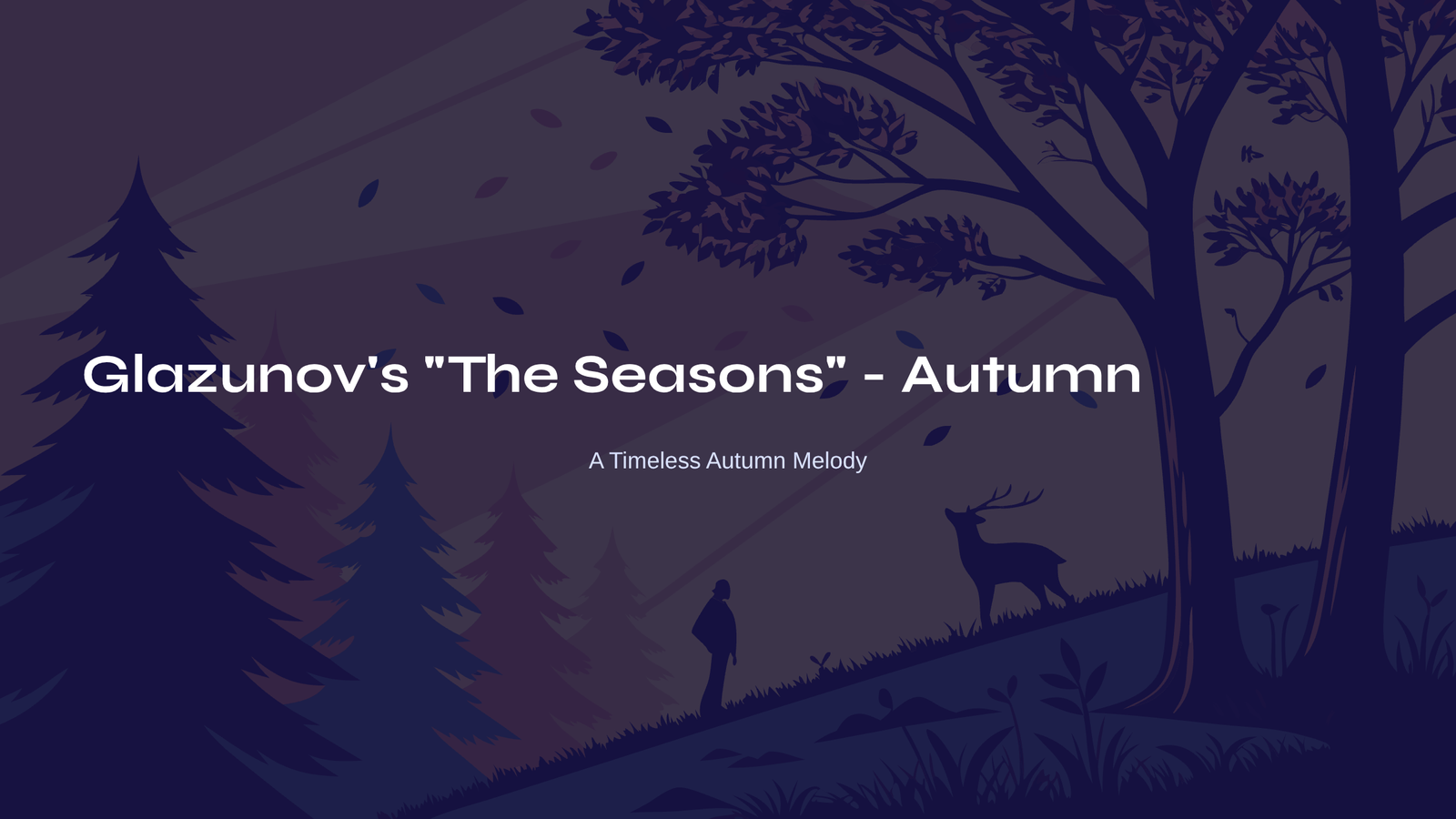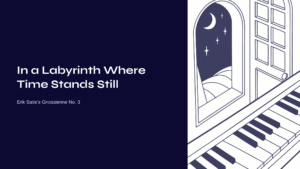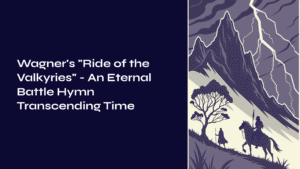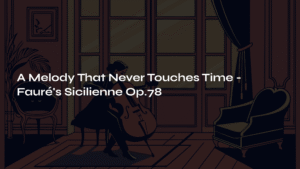Table of Contents
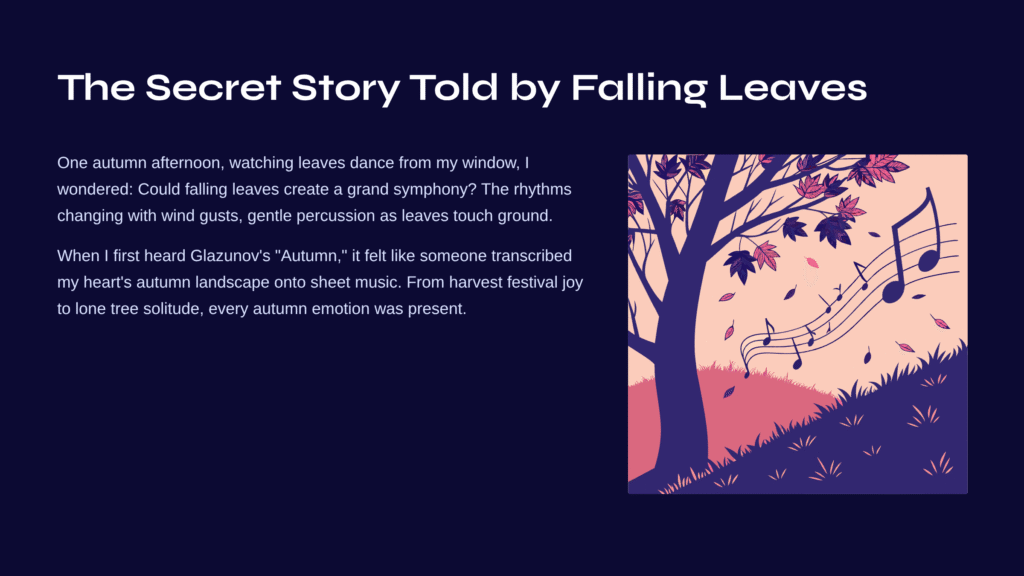
The Secret Story Told by Falling Leaves
One deep autumn afternoon, as I watched leaves dancing down from my window, a thought struck me. Could those tiny sounds made by falling leaves be coming together to create one grand symphony? The rhythms that change with every gust of wind, the gentle percussion as leaves touch the ground. It was during such contemplation that I encountered Glazunov’s “Autumn” from “The Seasons.”
When I first heard this music, it felt as though someone had transcribed the autumn landscape of my heart directly onto sheet music. From the jubilant energy of harvest festivals to the solitude of a lone tree, every emotional spectrum that autumn holds was present there.
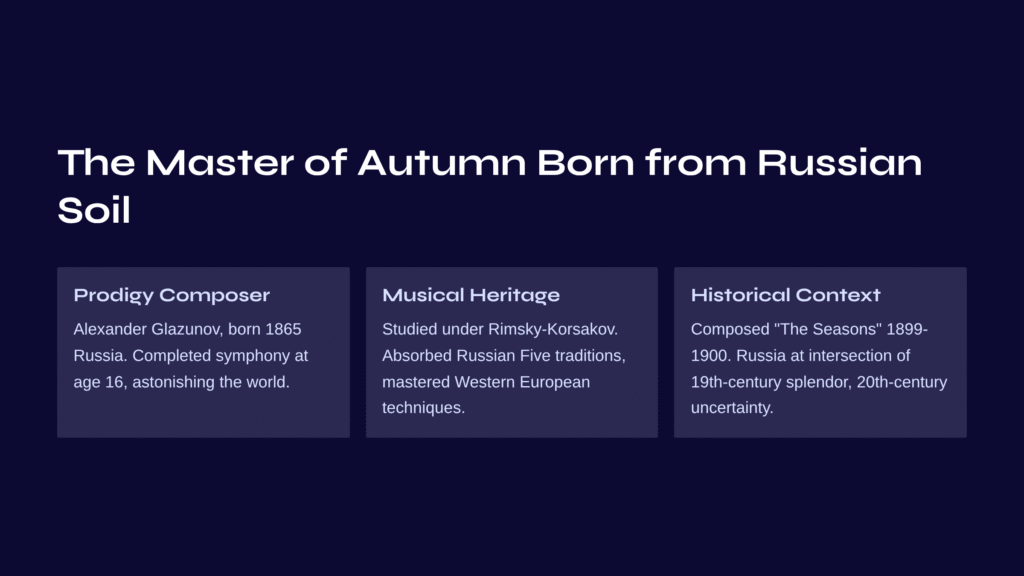
The Master of Autumn Born from Russian Soil: Glazunov
Does the name Alexander Glazunov sound unfamiliar? Born in Russia in 1865, he was a prodigious composer who astonished the world by completing a symphony at the remarkable age of 16. Under the tutelage of the great Rimsky-Korsakov, he absorbed the traditions of the Russian Five while perfectly mastering the sophisticated techniques of Western Europe.
He composed “The Seasons” between 1899 and 1900. Russia at that time was experiencing the intersection of late 19th-century splendor and early 20th-century uncertainty. This historical backdrop perhaps added a peculiar depth to his music. Beyond mere seasonal description, philosophical contemplations about the flow of time and life’s cycles permeate between the musical notes.
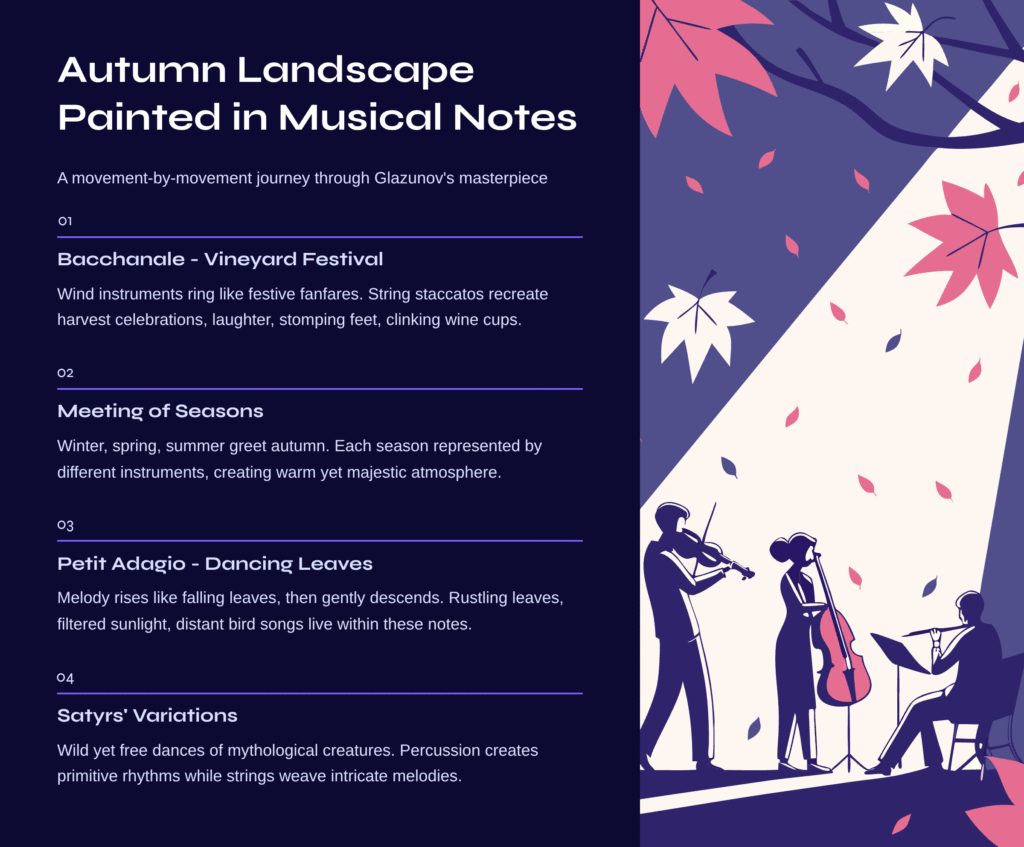
Autumn Landscape Painted in Musical Notes – A Movement-by-Movement Journey
The Passionate Vineyard Festival: Bacchanale
The first scene to greet us is the Bacchanale, a dance celebrating the grape harvest. Wind instruments ring out like festive fanfares over the rhythms created by the strings. Listening to this section, you can visualize the harvest festivals unfolding in Russia’s vast vineyards.
People’s laughter, the stomping of feet, the clear clinking of wine cups. Glazunov perfectly recreated all of this through string staccatos and powerful wind harmonies. The rhythmic vitality of this section is said to have later inspired contemporary film composers like John Williams, showing just how dynamic this life force truly is.
The Mysterious Meeting of Seasons
The following section depicts the appearance of the seasonal deities. Imagine winter, spring, and summer coming to greet autumn. Each season is represented by different instrumental groups, creating a warm yet majestic atmosphere, like old friends reuniting.
Here, Glazunov’s orchestration skills truly shine. Using the colorful instrumental techniques learned from Rimsky-Korsakov, he gives each season its unique timbre. Winter’s cold strings, spring’s light woodwinds, summer’s majestic brass, and autumn’s warm yet profound harmonies all blend together.
The Dancing Leaves of Petit Adagio
This is personally my most beloved section. True to its name as “little adagio,” it may be small in scale, but the beauty contained within is beyond verbal description.
The melody rises softly like leaves falling from trees, then gently descends. The poetic expression “autumn leaves fall like rain upon their joy” becomes the very essence of the music itself. Listen to this melody and take your own private autumn walk. The rustling of leaves underfoot, afternoon sunlight filtering through branches, distant farewell songs of birds—everything lives and breathes within these musical notes.
The Vital Variations of the Satyrs
Autumn isn’t always purely lyrical. In the satyrs’ variation section, the lively dances of these half-human, half-beast creatures from Greek mythology unfold. Their dance is wild yet free, sometimes even mischievous.
The role of percussion is particularly striking here. Over primitive rhythms created by drum sounds, the strings weave complex and intricate melodies. This perfectly expresses autumn’s dual charm—the harmonious coexistence of civilization and wilderness, order and freedom.
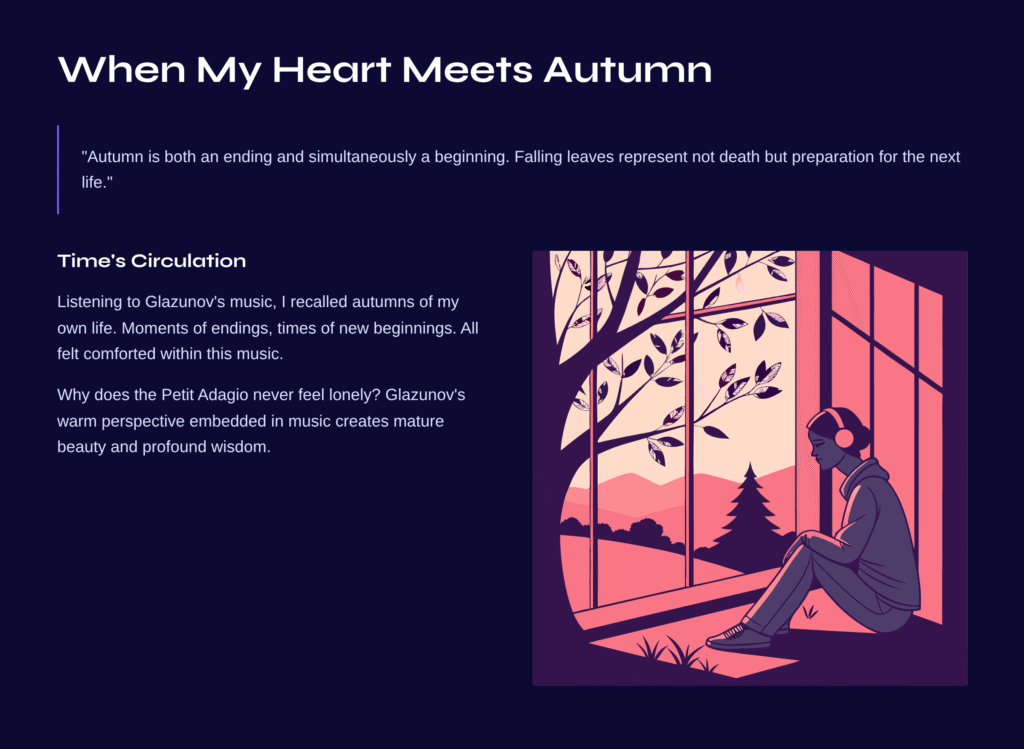
When My Heart Meets Autumn
What I felt most powerfully while listening to this music was the realization of “time’s circulation.” Autumn is both an ending and simultaneously a beginning. Falling leaves represent not death but preparation for the next life, and harvest is both a year’s conclusion and energy storage for the year to come.
Listening to Glazunov’s music, I found myself recalling the autumns of my own life. Moments when I had to end certain things, times when I was preparing for new beginnings. All of it felt comforted within this music. Why is it that when listening to the Petit Adagio section, I never feel lonely even when alone?
It must be because of the warm perspective Glazunov embedded in his music. His view of autumn is never cold or despairing. Instead, you feel mature beauty and profound wisdom.
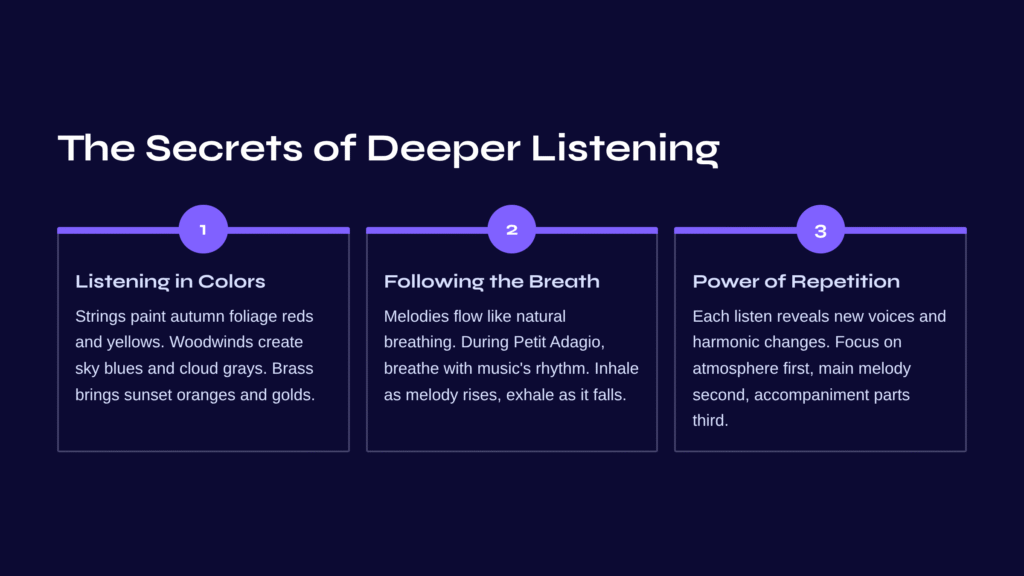
The Secrets of Deeper Listening
The First Secret: Listening in Colors
When appreciating this music, focus on the colors each instrument creates. The strings paint the reds and yellows of autumn foliage, woodwinds create the blues of autumn skies and grays of clouds, while brass instruments bring the oranges and golds of sunset. Listening through colors makes the music feel more three-dimensional.
The Second Secret: Following the Breath
Glazunov’s melodies flow like natural breathing. During the Petit Adagio section, try breathing slowly along with the music’s rhythm. Inhale as the melody rises, exhale as it falls—listening this way can give you a mystical experience of becoming one with the music.
The Third Secret: The Power of Repetition
Great classical music sounds completely different on the first listen compared to the tenth. Glazunov’s autumn particularly reveals new instrumental voices and harmonic changes with each repeated listening. Focus on the overall atmosphere first, then the main melody on the second listen, and the accompaniment parts on the third.
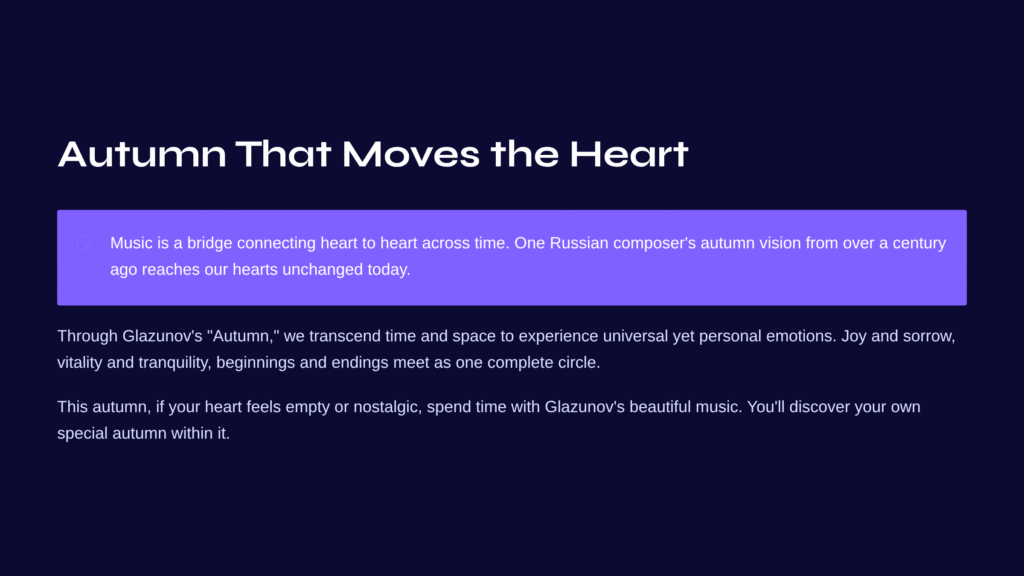
Autumn That Moves the Heart, and Us
Ultimately, isn’t music like a bridge that connects heart to heart across time? Seeing how one Russian composer’s view of autumn from over a century ago reaches our hearts unchanged in this very moment makes me think so.
Through Glazunov’s “Autumn” from “The Seasons,” we transcend time and space to experience the most universal yet personal emotions humans can feel. Joy and sorrow, vitality and tranquility, beginnings and endings meet in the music as if forming one complete circle.
This autumn, if your heart feels a bit empty or you find yourself in a nostalgic mood, why not spend time with Glazunov’s beautiful music? You’ll surely discover your own special autumn within it.
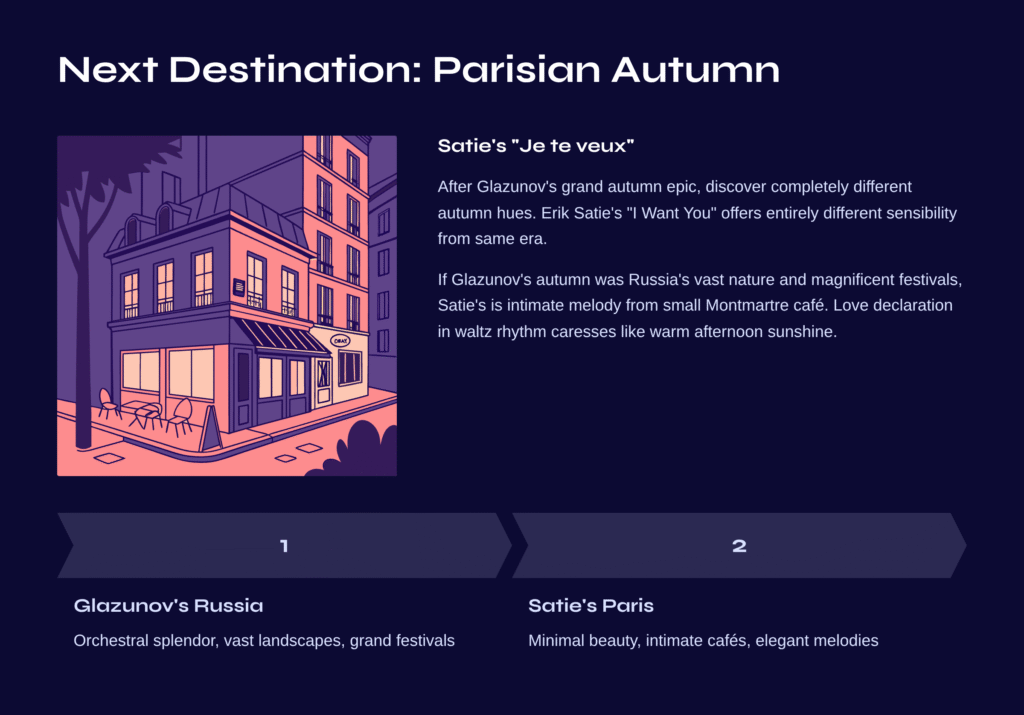
Next Destination: Parisian Autumn with Satie’s “Je te veux”
After embracing Glazunov’s grand autumn epic, how about encountering autumn in a completely different hue? Erik Satie’s “Je te veux (I Want You)” offers an autumn of entirely different sensibility, despite being from the same era.
If Glazunov’s autumn was Russia’s vast nature and magnificent festivals, Satie’s autumn is like an intimate, elegant melody flowing from a small café on Paris’s Montmartre hill. The declaration of love set to waltz rhythm caresses the heart as gently as warm afternoon sunshine in autumn.
The journey from Glazunov’s orchestral splendor to Satie’s minimal beauty offers the joy of new discovery, like traveling from a bustling city to peaceful countryside. The pleasure of comparing the completely different autumn visions these two composers present is truly exceptional.
